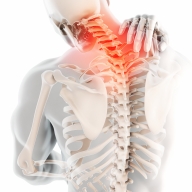Joint Fusion: When Other Pain Treatments Fail
Medically reviewed by
Dr. Jason O’Dell, MD
McLeod Orthopaedics
“People have probably heard about fusing vertebra of the spine, but the surgery to essentially “weld” two bones together can also be used in other places, such as the foot, ankle, thumb, wrist, finger and elbow,” says McLeod Orthopedic Surgeon Dr. Jason O’Dell. “Arthritis and failure of nonsurgical treatments are reasons fusion may be considered. However, a traumatic, painful injury can also lead to fusion.
THE PROCESS
If motion results in pain, the surgeon removes damaged cartilage, molds the end of the bones and permanently fastens them together with screws, pins and plates. In time, the bones grow together.
In the lower part of the ankle, a fusion of the heel bone and the bone above it (talus) can actually make movement easier, in addition to relieving pain.
In some cases, such as fusion of the midfoot (also called Lisfranc) there is little motion before surgery. So, after surgery a relatively normal gait can be maintained.
On the upper body, elbow problems can be treated with fusion, especially in laborers, who work with their arms and hands, or younger patients. After surgery, the patient will likely not be able to bend the elbow completely but will but will still be able to rotate the hand.
In the wrist, there is a condition (Kienbock’s disease), where blood supply to one of the small bones in the wrist is disrupted. This injury often occurs during a fall and the patient may think they simply sprained their wrist. However, the pain, limited range of motion and decreased grip strength will not go away. If the three bones of the wrist are fused, the patient will get relief from the pain and feel improved hand function. In complete fusion, wrist motion may be eliminated but forearm rotation and finger/thumb motion are still sustained.
Recovery takes about 3 months and during that time the joint will be held in position by a cast or brace. You may need some physical therapy for the fused joint to build up strength and recover mobility.
ACTION YOU CAN TAKE
There are many ways to treat joint pain and most of them are non-surgical. Don’t live with the pain. See an Orthopedic Specialist for a full examination and to discuss options.
Find an Orthopedic Specialist near you.
Sources include: McLeod Health, American Academy of Orthopaedic Surgeons, Arthritis Foundation
-
McLEOD REGIONAL MEDICAL CENTER FLORENCE
843-777-2000 -
McLEOD DARLINGTON
843-777-1100 -
McLEOD DILLON
843-774-4111 -
McLEOD LORIS
843-716-7000 -
McLEOD SEACOAST
843-390-8100 -
McLEOD CHERAW
843-537-7881 -
McLEOD CLARENDON
803-433-3000



-
McLEOD REGIONAL MEDICAL CENTER FLORENCE
843-777-2000 -
McLEOD DARLINGTON
843-777-1100 -
McLEOD DILLON
843-774-4111 -
McLEOD LORIS
843-716-7000 -
McLEOD SEACOAST
843-390-8100 -
McLEOD CHERAW
843-537-7881 -
McLEOD CLARENDON
803-433-3000
 Find a Doctor
Find a Doctor  Locations
Locations  Services
Services 